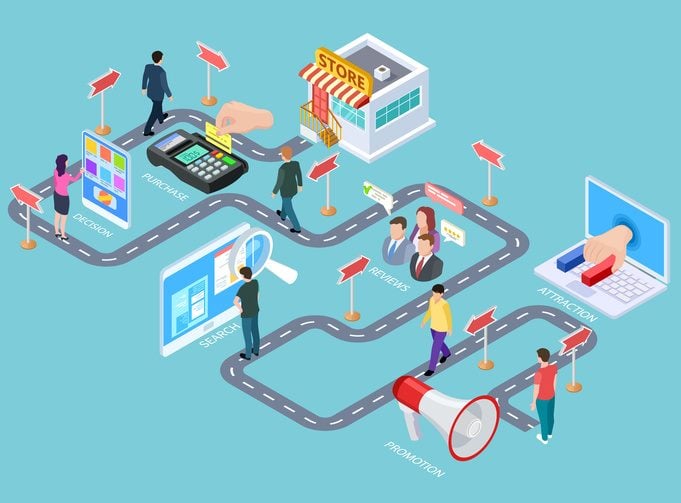The Gist
- Built-in service. Effective customer service should be part of the product or service, not merely a response to an issue after the fact.
- Connecting the journey. Disjointed experiences and repeated, conflicting information highlight frustrations and inefficiency.
If a customer is navigating the refund process, chances are they’ve already had a bad experience.
Think about any time you’ve asked for a refund. The product was broken or didn’t work as advertised. Maybe the food was undercooked or contained ingredients you requested left off. The service disorganized, late or subpar. Maybe you purchased a product or service, but things went wrong before you got to use it.
My experience was the latter — I bought a plane ticket and, after a multihour ordeal of delays, tears (not mine) and false boardings, I never got to use it.
Once a customer reaches the “refund” point, emotions are running high, and many might consider snubbing the offending brand for good. And research shows customers are very willing to jump ship after bad experiences, even with brands they’ve previously been loyal to.
As I ventured into my own refund hell, I asked myself one question: Is it possible at this point to win back an unhappy customer?
Related Article: Grounded in Reality: Air Travel Woes and Customer Experience Lessons
Customer Service: Just Deal With It
Customer service has the potential to be a vehicle for recovery, according to Dave Klimek, customer service and experience lead at KPMG. But not everyone is getting it right.
“The challenge,” Klimek said, “is customer service needs to be positioned as part of the product, part of the service, and that happens throughout — not something that happens after the fact.”
With the case of my airline experience, Klimek said that was an example of customer service being: Something happened, now I’m going to have to deal with it.
And dealing with it — i.e., me — is exactly what happened in a multiday ordeal that lacked any degree of structure. And during that time, I ran into three distinct problems:
- Multiple interactions: I had to navigate multiple channels — website, automated phone system, human agents on the phone — and multiple interactions over the course of several days.
- No omnichannel connectivity: Each interaction was a separate experience on my end, leaving me reexplaining my problem each time. As you can imagine, this retelling of my experiences got longer with each interaction, a frustration ranking high on my list.
- Conflicting information: Multiple employees gave me conflicting information about the refund process and next steps I needed to take throughout this ordeal, leaving me guessing who (if anyone) was right and if I would ever see my refund.
Bandages Don’t Heal Pain's Root Cause
Refunds are like bandages, said Klimek. With them, brands are dealing with the symptoms instead of the root cause of the problem.
Brands see success, he added, when they look at what’s driving the negative experience to begin with and determine how to get in front of it and proactively engage with the customer throughout the relationship with the brand.
“When you think of the service experience, you have to think of it holistically and end-to-end,” he explained. "But what happens is, when companies put together some of their service plans or their actionable plans, they deal with it on an intent-by-intent basis.”
The solution is to map out the end-to-end experience, said Klimek, including all of the different connected needs and breakpoints, which translate to both digital channels and human experiences.

“One of the first things I’ve seen that’s worked well is mapping out what can we handle within a digital channel and what part of the journey can I not handle?” Then, he said, the goal is to create a bridge between those two points, something he refers to as: “Digital when I want, human when I need.”
What does that mean? In practice, it means offering customers a bridge to a human when the moment requires it — such as switching from chatbot to live agent when a bot’s knowledge runs short — which builds trust in those digital channels in the future, said Klimek.
Related Article: Is Your Organization’s Digital Customer Experience Proactive or Reactive?
Being Nice Isn’t Good Enough
A customer may have a bad experience — for example, you miss a flight, and the airline doesn’t know where your luggage is. But what the organization and employees are focused on, said Klimek, is: “Did I treat you well?”
And kindness, he said, is table stakes. It’s something every company should offer, not act as a consolation for things gone wrong.
“What really drives whether you can recover a customer,” he said, “is, can I get that resolution? And while being nice, not in place of or instead of being nice.”
So how do you accurately measure the experience and get that resolution?
One customer experience metric Klimek said organizations are moving toward is total time to resolution, or “how long it takes for a customer’s transaction or inquiry to get solved, regardless of the number of contacts the customer has had.”
Repeat interactions are a barrier across all industries, he explained. When customers call in and speak to different people, they might get marked as a separate inquiry. In some situations, he said, you might call back and talk to the same person, but your call is tagged as a different need. And that’s not even taking into account digital interactions.
When you start looking at total time to resolution, Klimek said, “you start seeing that Michelle calling five times and talking for 10 minutes each time is actually more expensive than Michelle calling once and talking for 40 minutes.”
The Difference Between a Good & Bad Experience
When you look at both positive and negative customer experiences, the difference isn’t a desire to do well, said Klimek. He thinks they all hold that desire.
Instead, he said, “Can I translate that into: What do I do differently?”
Can you unify channels within the customer experience? Improve employee knowledge? Look at different customer experience stats?
Klimek pointed to the customer satisfaction score (CSAT) as an example. “I have a very high CSAT score. So what does that mean? You don’t have improvements…? Should you think of measuring something different?”
There is no magic measurement that will completely tap into your customers’ thoughts, expectations and emotions. However, an end-to-end approach to customer service that always strives to ask “what next” could be a recipe for winning back customers after bad experiences — and preventing those bad experiences from happening in the first place.
Learn how you can join our contributor community.
